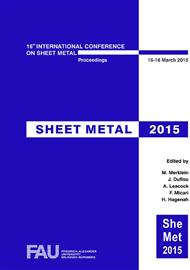[1]
S. Vergura, M. Carpentieri, F. Lattarulo, Diagonal Mesh Equivalent (DME) for the calculation of the hysteresis losses in electrical machines, Physica B 435 120–124, (2014).
DOI: 10.1016/j.physb.2013.09.047
Google Scholar
[2]
Barbara Slusarek, Bartosz Jankowski, Krzysztof Sokalski, Jan Szczygłowski, Characteristics of power loss in soft magnetic composites a key for designing the best values of technological parameters, Journal of Alloys and Compounds 581 699–704, (2013).
DOI: 10.1016/j.jallcom.2013.07.084
Google Scholar
[3]
Lajos Nagy, TamásSzabó, EndreJakab, Electro-dynamical modeling of a solenoid switch of starter motors, Procedia Engineering 48 445 – 452, (2012).
DOI: 10.1016/j.proeng.2012.09.538
Google Scholar
[4]
R. Simpkin, C. D'Ambrosio, J. Simonsson, Dr. M Abele, Dr. A. Ferré, L. Rollinitz, R Estrada Vazquez, Prof. I. Boldea, Dr. S Scridon, Energy efficient vehicles for road transport, Procedia - Social and Behavioral Sciences 48 3613 – 3621, (2012).
DOI: 10.1016/j.sbspro.2012.06.1324
Google Scholar
[5]
JiannaHuang, Di Wang, Dabin Zhang, The Torque Characteristic Analysis and Simulation on Electromagnetic Gears, Energy Procedia 17 1274 – 1280, (2012).
DOI: 10.1016/j.egypro.2012.02.238
Google Scholar
[6]
Amina Ibala, RabebRebhi, Ahmed Masmoudi, MEC-Based Modelling of Claw Pole Machines: Application to Automotive and Wind Generating Systems, International Journal Of Renewable Energy Research, Vol. 1, No3, pp.110-117, (2011).
Google Scholar
[7]
Y. Matsui, T. Hayamizu, K. Shima, T. Fukami, R. Hanaoka, and S. Takata, A Salient-Pole Synchronous Generator with Permanent Magnets Between the Field Poles, Electrical Engineering in Japan, Vol. 174, No. 4, 2011 Translated from Denki GakkaiRonbunshi, Vol. 129-D, No. 1, January 2009, p.109.
DOI: 10.1002/eej.21132
Google Scholar
[8]
O. Vitek, V. Hajek, Design and analysis of an automotive alternator, Brno University of Technology.
Google Scholar
[9]
Wolfgang Borutzky, Alessandra Orsoni, Richard Zobel, Spectral study on the voltage waveform of claw pole automotive alternator, Proceedings 20th European Conference on Modelling and Simulation, © ECMS, 2006 ISBN 0-9553018-0-7 / ISBN 0-9553018-1-5.
DOI: 10.7148/2006-0456
Google Scholar
[10]
X. Bao, Q. Wang, Y. Ni, Modeling and optimization of the claw pole alternator based on support vector machines and chaos, 0-7803-9091-1/05/$20. 00 ©2005 IEEE.
DOI: 10.1109/icmlc.2005.1527639
Google Scholar
[11]
W. Eversman, S. Burns, S. Pekarek, Hua Bai, J. Tichenor, Noise generation mechanisms in claw pole alternators, Journal of Sound and Vibration 283 369–400, (2005).
DOI: 10.1016/j.jsv.2004.04.012
Google Scholar
[12]
Birgit Knorr, Deepika Devarajan, Dingsheng Lin, Ping Zhou, and Scott Stanton, Application of Multi-level Multi-domain Modeling to a Clawpole Alternator, Copyright © 2004 Society of Automotive Engineers, Inc.
DOI: 10.4271/2004-01-0758
Google Scholar
[13]
H.Q. Chen, Q.C. Wang, H.G. Guo, Research on the casting-forging precision forming process of alternator poles, Journal of Materials Processing Technology 129, 330-332, (2002).
DOI: 10.1016/s0924-0136(02)00684-2
Google Scholar


